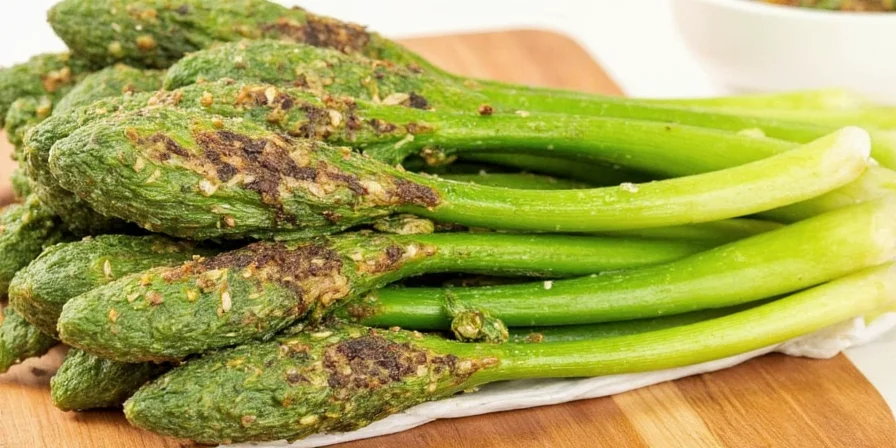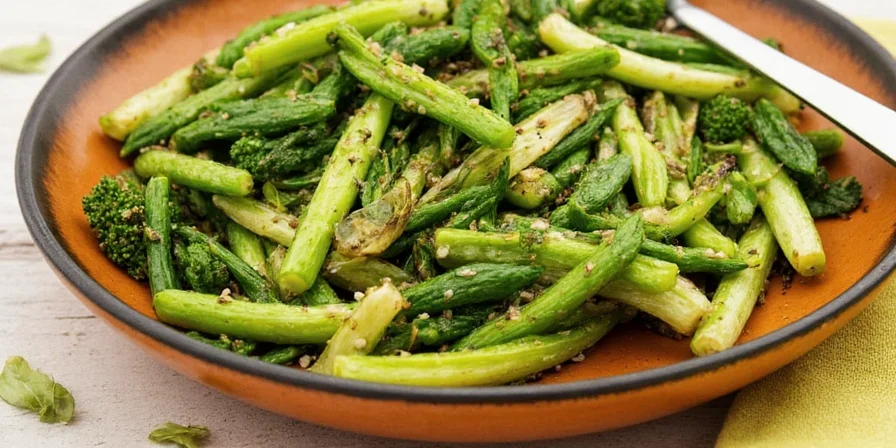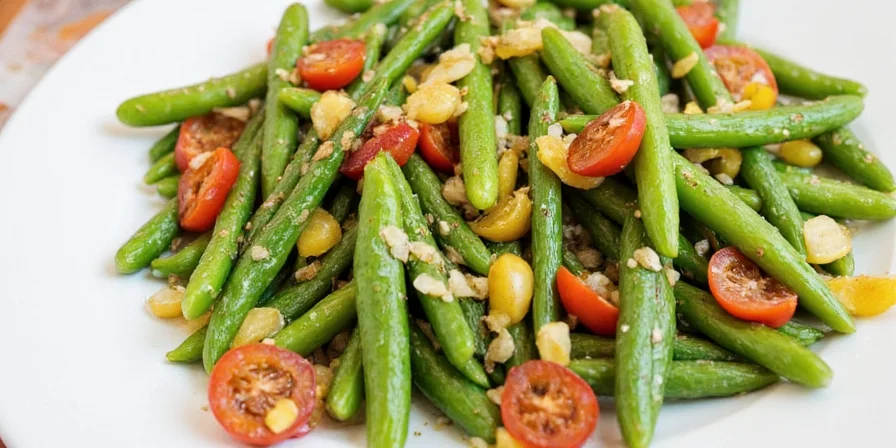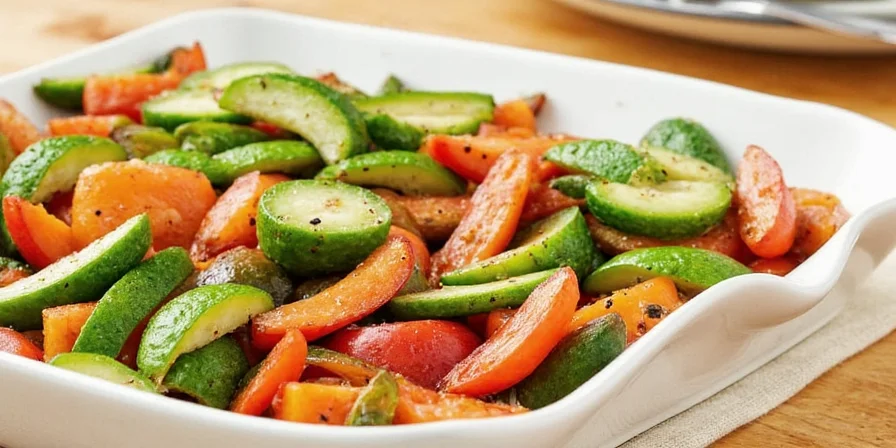How to Make Vegetables Taste Amazing: Your Quick Answer
If you've ever wondered how to make vegetables taste better with spices, here's what works immediately: For most vegetables, toss them with olive oil, 1/2 teaspoon garlic powder, 1/4 teaspoon salt, and fresh herbs before roasting at 400°F for 20-25 minutes. This simple combination creates crispy edges and brings out natural sweetness without overpowering the vegetable's flavor.
Table of Contents
- Why Most Vegetables Taste Bland (And How Spices Fix This)
- The 5-Minute Seasoning System That Works Every Time
- Best Spice Combinations for Popular Vegetables
- When to Add Spices During Cooking (Critical Mistake Most Make)
- 3 Biggest Seasoning Mistakes That Ruin Vegetable Flavor
- Simple Veggie & Spice Matching Guide
- Easy Seasonal Adjustments for Perfect Flavor All Year
- Putting It All Together: Your New Go-To Vegetable Seasoning Routine
Why Most Vegetables Taste Bland (And How Spices Fix This)
Vegetables often taste boring because they lack natural fat and umami that make other foods satisfying. The good news: the right spices create flavor magic by enhancing natural sweetness, balancing bitterness, and creating new taste experiences without adding unhealthy ingredients.
Unlike what many believe, you don't need fancy spice blends or professional techniques. With just 5 basic pantry spices and proper timing, you can transform even the most boring vegetables into dishes people will actually enjoy.

The 5-Minute Seasoning System That Works Every Time
Follow this simple formula for perfectly seasoned vegetables in minutes:
- Prep vegetables - Cut into even pieces (1-1.5 inches)
- Create oil mixture - Whisk together 2 tablespoons oil (olive or avocado) with 1/2 teaspoon garlic powder, 1/4 teaspoon salt, and 1/4 teaspoon black pepper
- Coat vegetables - Toss vegetables in oil mixture until lightly coated (not soaked)
- Add spices - For roasting: add 1/2 teaspoon dried herbs (rosemary, thyme, or oregano); for quick cooking: add delicate spices later
- Cook properly - Spread in single layer, don't overcrowd pan, roast at 400°F until edges are golden
This method works because the oil carries flavor into the vegetable while the proper spacing allows for caramelization instead of steaming.
| Vegetable Type | Best Basic Seasoning Combo | Special Tip |
|---|---|---|
| Cruciferous (broccoli, cauliflower) | Garlic powder + lemon zest | Add lemon zest after cooking to preserve brightness |
| Root vegetables (potatoes, carrots) | Smoked paprika + thyme | Par-cook in microwave 2-3 minutes before roasting |
| Sweet vegetables (sweet potatoes, squash) | Cinnamon + cumin | Use just a pinch of cinnamon (too much overpowers) |

Best Spice Combinations for Popular Vegetables
Stop guessing which spices work with which vegetables. These simple combinations deliver reliable results:
| Vegetable | Perfect Spice Combo | Quick Application Tip |
|---|---|---|
| Brussels Sprouts | Garlic + balsamic vinegar | Toss with balsamic in last 5 minutes of roasting |
| Carrots | Cumin + coriander | Toast spices in pan before adding to carrots |
| Eggplant | Za'atar + lemon | Don't oversalt eggplant before cooking |
| Broccoli | Red pepper flakes + Parmesan | Add cheese in last 5 minutes to prevent burning |
| Sweet Potatoes | Cinnamon + smoked paprika | Use just 1/8 teaspoon cinnamon per pound |

When to Add Spices During Cooking (Critical Mistake Most Make)
The timing of spice application makes or breaks vegetable flavor. Most home cooks make these mistakes:
- Adding all spices at the beginning - delicate spices burn and lose flavor
- Using the same timing for all cooking methods - roasting needs different timing than sautéing
- Not adjusting for moisture content - watery vegetables need different timing than starchy ones
Here's the simple timing guide that works for 95% of vegetable dishes:
- Before cooking: Add salt (about 40% of total), oil, and earthy spices (cumin, coriander)
- During cooking: Add medium-intensity spices (paprika, chili powder) in the middle
- After cooking: Finish with delicate spices (fresh herbs, citrus zest, red pepper flakes)
For roasted vegetables: apply 70% of spices before cooking with oil, finish with remaining 30% after cooking. For sautéed vegetables: add delicate spices in the last 2-3 minutes.

3 Biggest Seasoning Mistakes That Ruin Vegetable Flavor
Avoid these common errors that make vegetables taste worse:
- Over-salting before cooking - Salt draws out moisture which evaporates, concentrating saltiness by the end. Instead: use half the salt before cooking, half after.
- Mixing too many strong flavors - Combining 4+ bold spices creates flavor confusion. Stick to 1-2 dominant flavors per dish.
- Using old spices - Ground spices lose potency after 6 months. Test by rubbing between fingers - if little aroma, replace them.
Fix these mistakes and you'll immediately notice better tasting vegetables without changing your recipes.
Simple Veggie & Spice Matching Guide
Keep this chart handy for foolproof pairings:
| Vegetable Type | Best Spices | When to Add |
|---|---|---|
| Sulfur-rich (broccoli, cauliflower) | Mustard seeds, garlic | Add garlic with oil before cooking |
| Sweet (carrots, sweet potatoes) | Cinnamon, cumin | Use small amounts before cooking |
| Bitter (kale, radicchio) | Lemon zest, red pepper | Add after cooking for brightness |
| Earthy (beets, mushrooms) | Thyme, smoked paprika | Add before cooking for deep flavor |
| Watery (zucchini, cucumbers) | Dill, mint | Add fresh herbs after cooking |
Easy Seasonal Adjustments for Perfect Flavor All Year
Adjust your seasoning based on the season for consistently great results:
- Spring: Lighter seasonings - fresh herbs like dill and mint, lemon zest
- Summer: Brighter flavors - more acid (lemon/vinegar), less oil
- Fall: Warmer spices - cinnamon, nutmeg, smoked paprika
- Winter: Bold flavors - garlic, rosemary, thyme
Seasonal vegetables have different water and sugar content, so adjusting your seasoning approach ensures perfect flavor regardless of what's in season.
Putting It All Together: Your New Go-To Vegetable Seasoning Routine
Follow this simple routine for perfectly seasoned vegetables every time:
- Prep vegetables in even pieces
- Create oil mixture with 2 tbsp oil + 1/2 tsp garlic powder + 1/4 tsp salt
- Toss vegetables in oil mixture
- Add appropriate spices based on vegetable type (use chart above)
- Cook properly (roast at 400°F for most vegetables)
- Finish with fresh herbs or acid after cooking
This approach works because it balances simplicity with professional technique. You don't need fancy equipment or hard-to-find ingredients - just proper timing and the right spice combinations.
Start with these basic combinations, then experiment as you become more comfortable. Soon you'll be seasoning vegetables like a pro without even thinking about it.
Frequently Asked Questions
What are the 3 most versatile spices for vegetables?
Garlic powder, smoked paprika, and dried thyme work with nearly all vegetables. Garlic adds savory depth, smoked paprika creates complexity without heat, and thyme provides herbal notes that complement most vegetables. Keep these three in your pantry for reliable results with any vegetable.
How much salt should I use for vegetables?
Start with 1/4 teaspoon salt per pound of vegetables before cooking, then add another 1/8 teaspoon after cooking. This two-stage approach prevents over-salting while ensuring proper seasoning throughout. Remember that salt helps draw out moisture which evaporates during cooking, concentrating the saltiness.
Can I use fresh spices instead of dried?
Yes, but use 3 times more fresh herbs than dried (1 tablespoon fresh = 1 teaspoon dried). Add fresh herbs at the end of cooking to preserve flavor, while dried herbs work better added earlier. For garlic and ginger, fresh provides brighter flavor but burns more easily than powdered versions.
Why do my roasted vegetables taste bitter?
Bitterness usually comes from burning spices or overcrowding the pan. To fix: reduce oven temperature to 375°F, spread vegetables in a single layer with space between pieces, and add delicate spices like paprika only in the last 10 minutes of roasting. Also check that your spices aren't too old, as degraded spices can taste bitter.
What's the best oil for seasoning vegetables?
Olive oil works well for most roasting (up to 400°F), while avocado oil handles higher temperatures better. For the best flavor, combine half oil with half melted butter or a small amount of mayonnaise, which helps spices adhere better and creates crispier edges. Avoid strongly flavored oils like sesame for general vegetable roasting.











 浙公网安备
33010002000092号
浙公网安备
33010002000092号 浙B2-20120091-4
浙B2-20120091-4